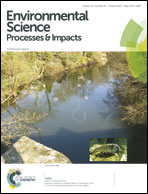Assessment of arsenic availability in soils using the diffusive gradients in thin films (DGT) technique—a comparison study of DGT and classic extraction methods
Abstract
This study was conducted to evaluate the feasibility and accuracy of available arsenic (As) measurement in soils using the diffusive gradients in thin films (DGT) technique and to shed further light on the risk evaluation of As-contaminated soils. A bio-indicator method was used to evaluate the dependence of As concentrations in plant tissues (edible rape) on the As concentrations measured by other methods. DGT, extraction of soil pore water, 0.5 M NaHCO3, 1 M HCl, 1 M NH4Cl, 0.5 M NH4F, 0.1 M NaOH and 0.25 M H2SO4 extraction methods, as well as total As content in the soil were employed in this study. Edible rape was grown in 43 soils containing different concentrations of As. A better correlation was obtained between the As concentrations in plant tissues and the As concentrations measured by DGT than between plant concentrations and those measured by other methods. The coefficients of determination (R2) before and after growth of edible rape were 0.84 and 0.83, respectively. Levels of As in plants and in soil pore water were also closely related: the coefficients of determination (R2) between these variables before and after growth of edible rape were 0.83 and 0.81, respectively. Measurements from the chemical extraction methods were inferior to those from DGT and soil pore water. Levels of As in plants were more scattered and nonlinear with respect to total soil As content (R2 = 0.27). The As measured by DGT closely reflected the pool of plant-adsorbed As. From the data obtained in this study, we can conclude that DGT is an effective technique for the prediction and assessment of As bioavailability in soils.


 Please wait while we load your content...
Please wait while we load your content...